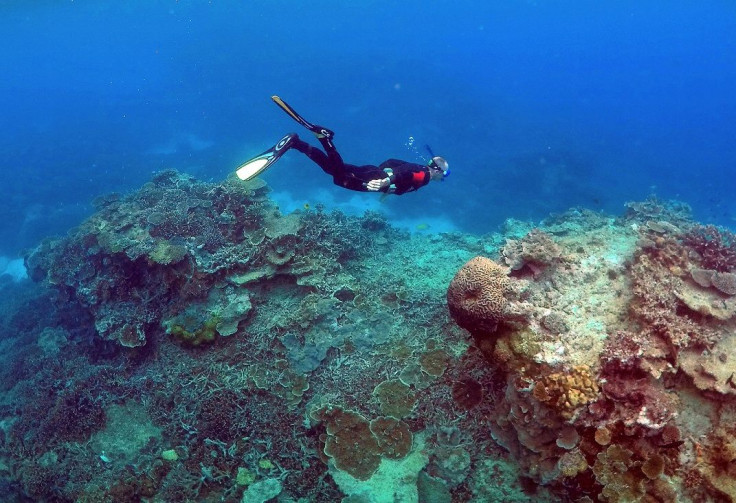The Great Barrier Reef: A glimpse into the present condition of the world's greatest coral reef system

The Great Barrier Reef is under threat and there is little doubt about it. But the reef, one of the greatest natural wonders in the world, doesn’t fail to surprise and overwhelm whomever comes by to take a peek. It is host to a diversity of ecosystem that make the coral reef a favorite among tourists, not to mention generating over $3 billion in revenues every year.
When Australian Associated Press (AAP) writer Rachael Burnett decided to see the Great Barrier Reef, little did she know it then that the reef had aplenty surprises in store for her.
The Great Barrier Reef through Burnett
Having relocated to Australia for a few months, Burnett made it her business to discover the world’s largest coral reef system. She started her underwater journey at Flynn Reef, a popular dive site, only to come face-to-face with some remarkable marine life— sea turtles and reef sharks, besides impressive schools of fish and spectacular corals.
“The moment I put my head under the surface, I'm surrounded by scores of dazzling fish and multi-coloured corals,” Burnett wrote, not being able to hold her excitement, according to a News.com.au report.
“None of the pictures I've seen come close to how incredible it is in real life. Everywhere I look there is a fantastic creature, from huge turquoise Maori wrasse to tiny, stripy sea slugs,” Burnett further said.
The Great Barrier Reef offers a galore of highlights to locals and tourists alike. According to Burnett, one of the prime activities besides snorkeling, is to swim through a canyon “to discover a giant, blue and purple clam at the end.” The tropical islands dotted along the coast are just great for exploring the reef.
A 45-minute ferry-ride takes the tourist to Fitzroy Island National Park to enjoy its walking trails, rainforest and fringing coral reef. One of the main highlights of this site is the glass-bottomed boat tour, a must-try for those who don't want to get their hair wet.
Fitzroy Island is also home to the Cairns Turtle Rehabilitation Centre. This organisation takes care of sick and injured turtles. These resident turtles were found to be suffering from starvation when they were brought in. Some of them had even eaten plastic bags and other rubbish.
The threats to the Great Barrier Reef
The starfish pose the greatest threat to the reef, primarily because of its venomous characteristic. The population of this marine life has only grown through the years owing to several factors including water pollution and decline in the numbers of predators.
Crown-of-Thorns eradication program by the Association of Marine Park Tourism Operators trains young disadvantaged Australians to become divers, just one of the measures that have been in practice since 2010. More than 500,000 starfish have been removed so far.
"Basically we have to reduce global carbon emission otherwise it's not looking good for reefs around the planet," Dr Suzanne Long said in a statement. She is the program director at the Reef and Rainforest Research Centre in Cairns.
Surveys carried out last winter revealed bleaching as the primary component that killed 35 percent of coral in central and northern parts of the reef. While much of the coral has already died, the part that hasn't is likely to take more than a decade to revert to its original condition. Many of the fish have also disappeared, reports say.





















